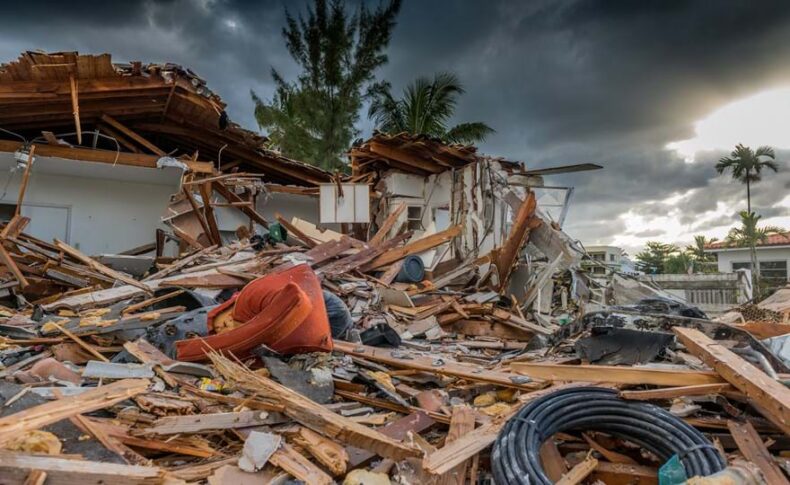80% of the 50 vulnerable provinces affected by Climate catastrophe, by 2050, are going to be in India, China and the United States of America.
Cross Dependency Initiative (CDI)
The Report’s Recital
Nine Indian states got featured in a report published in the name of ‘Gross Domestic Climate Risk‘, indicating the effect of Climate Change on the regions’ built environment (man-made landscape). The report was published recently as a part of the Cross Dependency Initiative (CDI).

The Gross Domestic Climate Risk analysis was based on estimating the extent of harm caused by the eight climate change hazards: coastal flooding, riverine flooding, surface flooding, extreme wind, extreme heat, soil movement, freeze-thaw and forest fire.
The nine states from the Indian peninsula along with their spot are- Bihar (22nd), Uttar Pradesh (25th), Assam (28th), Rajasthan (32nd), Tamil Nadu (36th), Maharashtra (38th), Gujarat (48th), Punjab (50th) and Kerala (52nd). It is to be noted that out of the nine states, Assam is predicted to see a 330 percent increase in infrastructural damages in 2050 compared to 1990.

The report garners attention for being one of its kind as it analyses the outcomes of vehement climate change hazards on the built environment, considering the consequences at both micro and macro levels. The synthesis employed the global climate change models combined with local weather, environmental data and engineering archetypes for investigation.
As per the report, Asia dominates with names of 114 regions among the top 200 regions at risk of climate hazard, through an understanding of the aggregated damage ratio (ADR).
The analysis defines ADR as “the ratio between the total amount of damage to the built environment in a particular province”. The ratio is then aggregated to narrow down the focus on the region having a larger share of threats.
Outside of India
China is in a precarious situation presently, as it dominates the list. The regions that are at high risk in China, are centralized in the eastern and southern parts of the country including the floodplains and deltas of the rivers Yangtze and Pearl.
In the U.S.A., it is reported that Florida, California and Texas are getting severely affected.
In the neighboring nation of Pakistan, many of the provinces have got featured in the top 100. One of the most profound provinces is Sindh. As per several media reports, the province incurred catastrophic damages due to heavy flooding in 2022.
As per the analysis, Brazil, Pakistan and Indonesia have the top 50 provinces in danger whereas, Beijing, Jakarta, Ho Chi Minh City, Taiwan and Mumbai are in the top 100, in the report.
India as a potential leader
The nation is in the eyes of everyone as it is attempting and slogging hard to rise as a global leader. Therefore, one can assume, its actions will be watched closely.

In times of crisis, like these, India needs to take concrete and effective actions. As per the Intergovernmental Panel on Climate Change’s (IPCC) 2018 report, the country is required to adapt to increased water scarcity, droughts, floods, cyclones and other natural disasters.
The country has definitely, since that time, progressed and developed mechanisms to tackle the issues at hand but, it still needs to optimise a few more resources to extract hereafter benefits.













